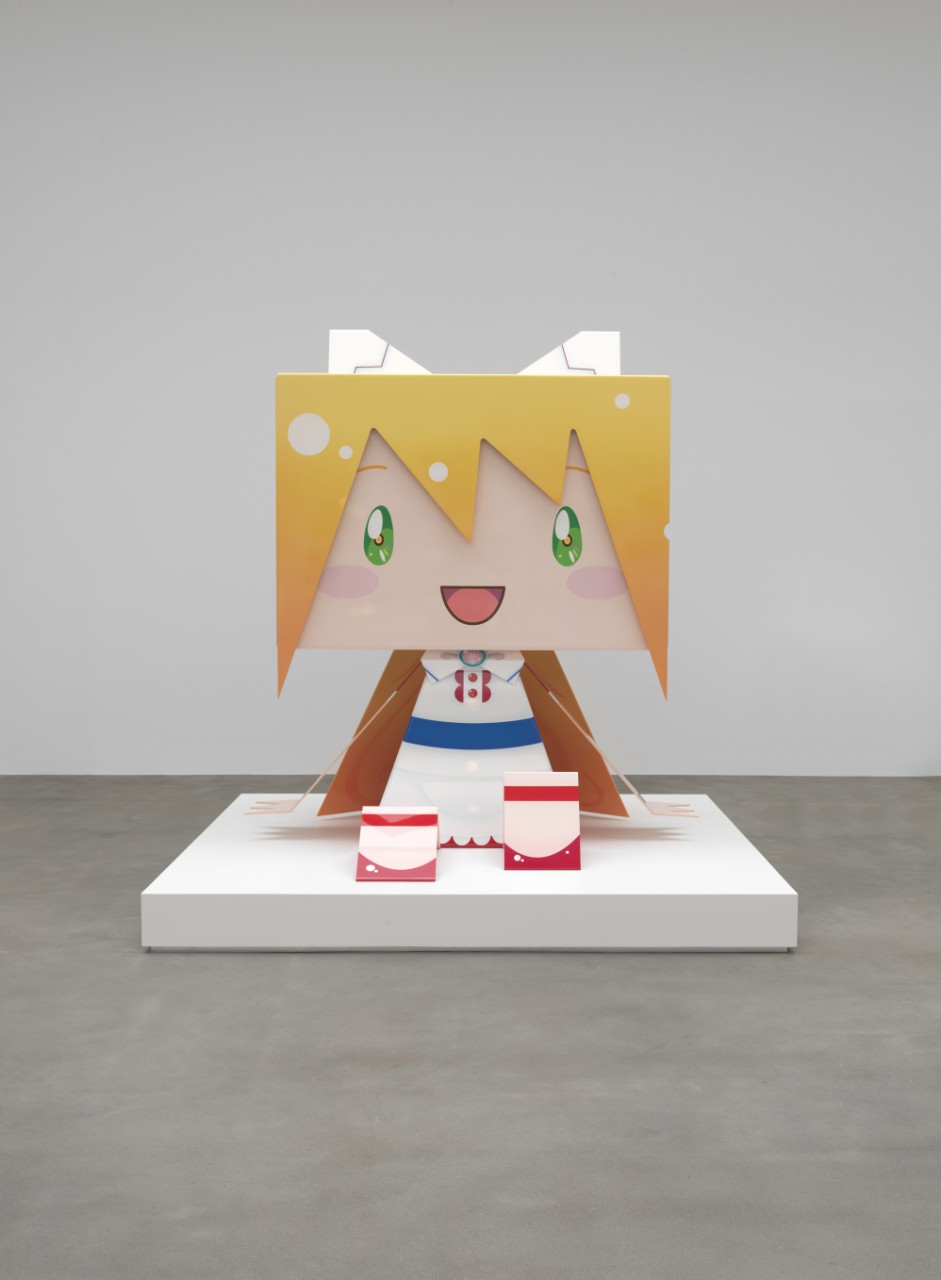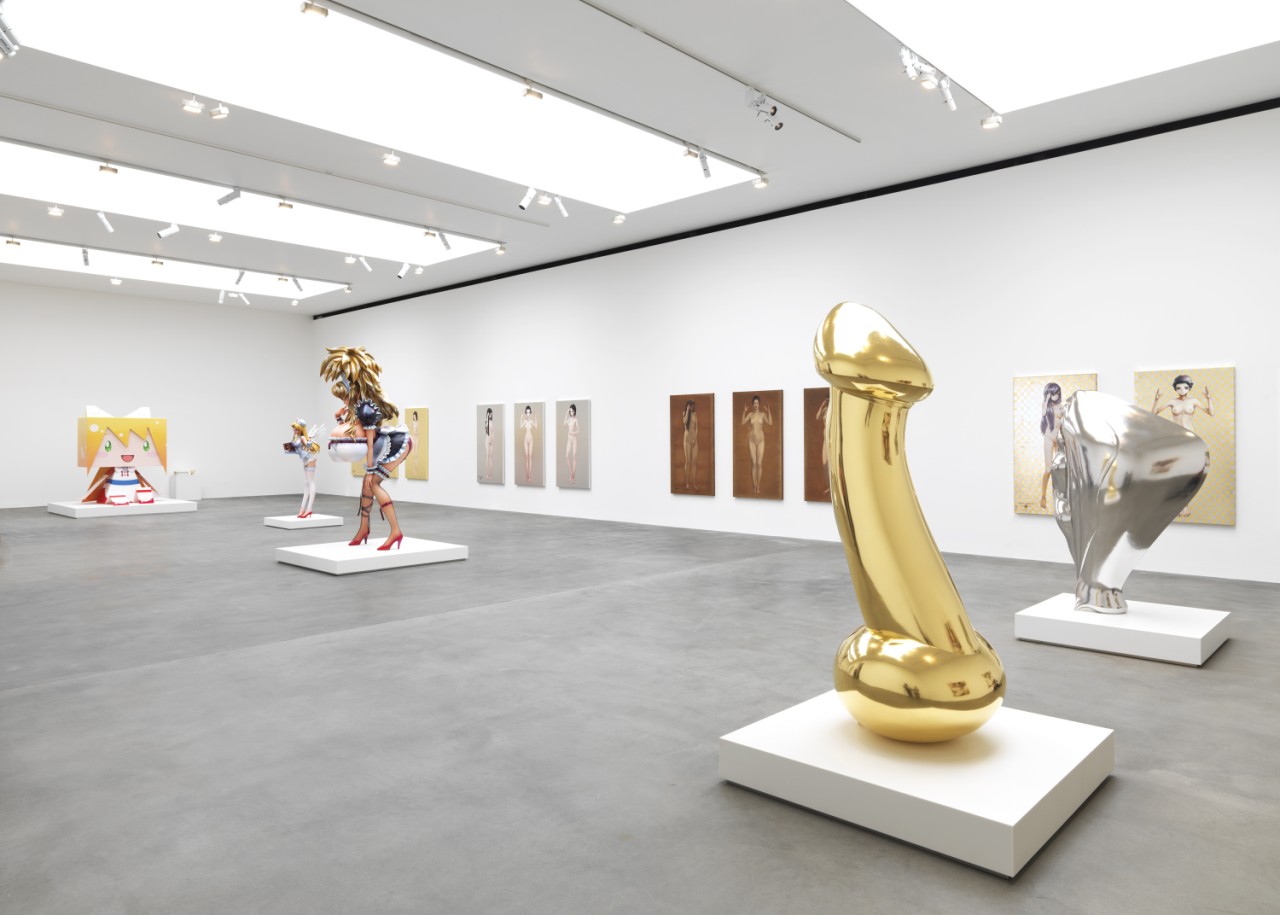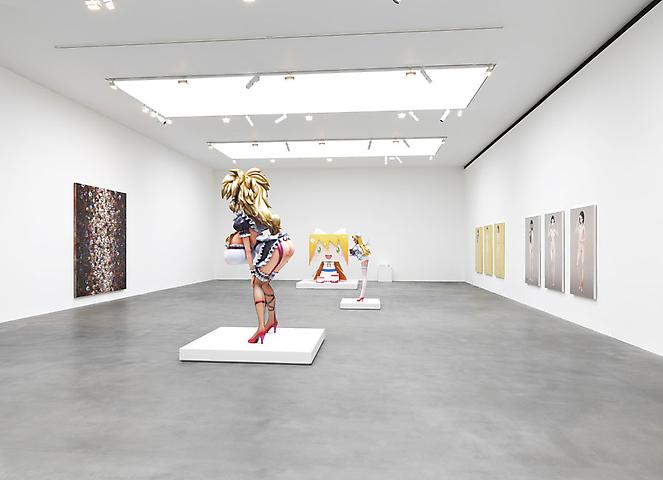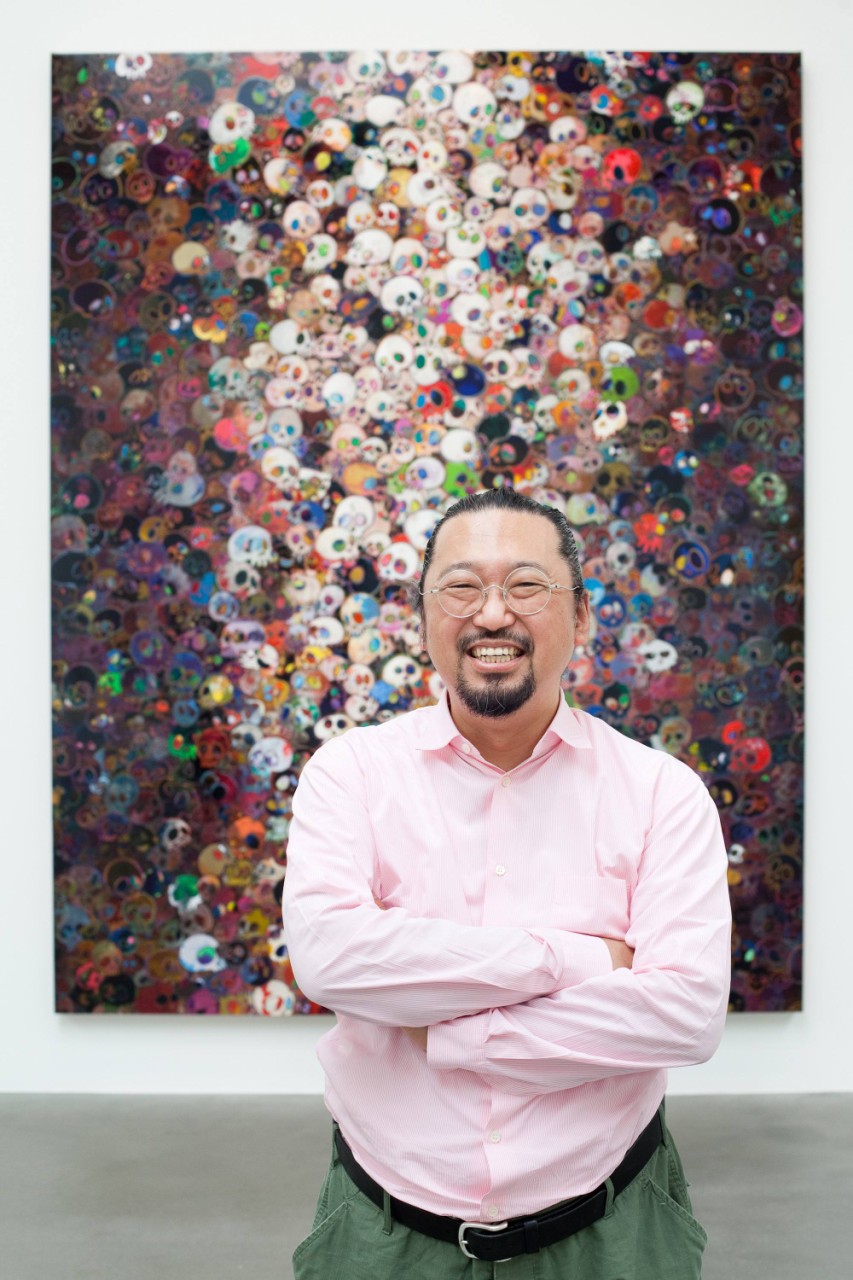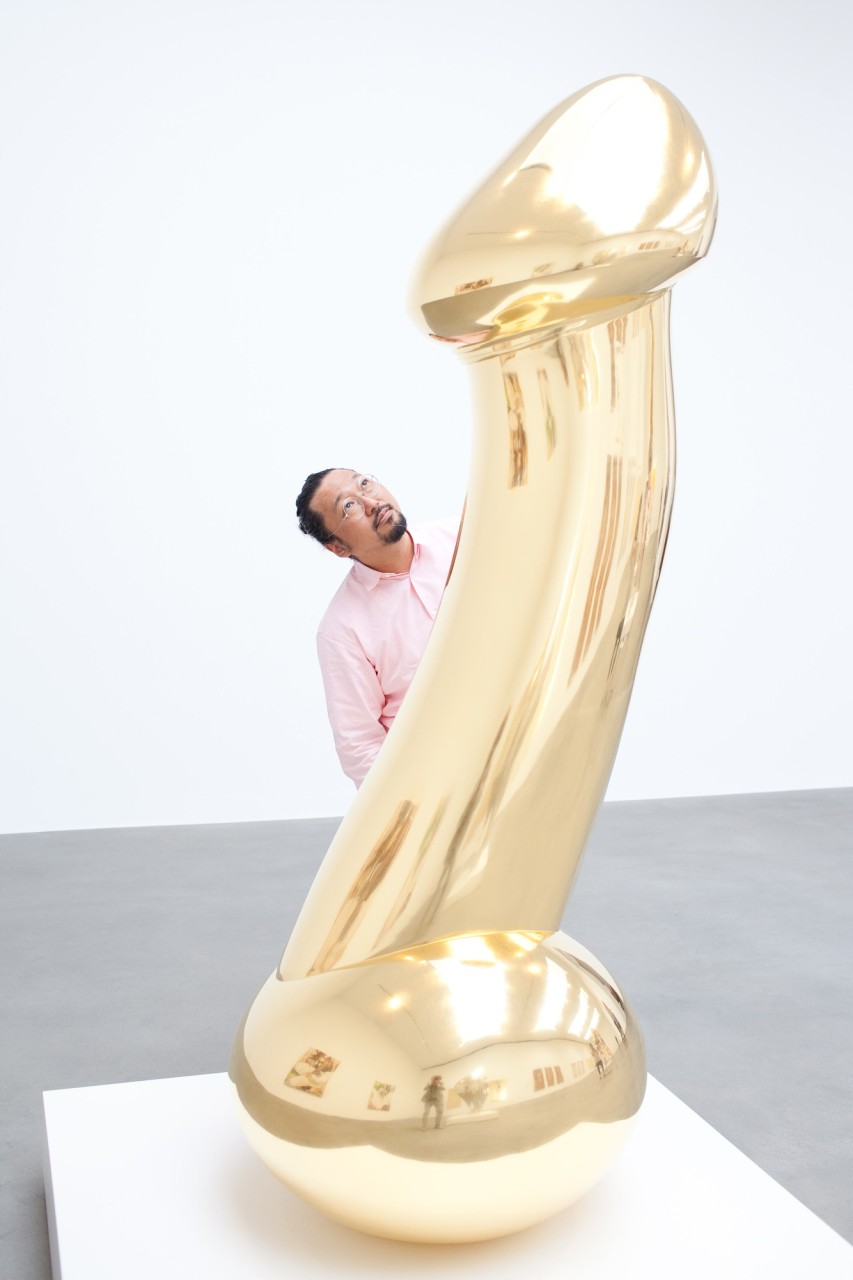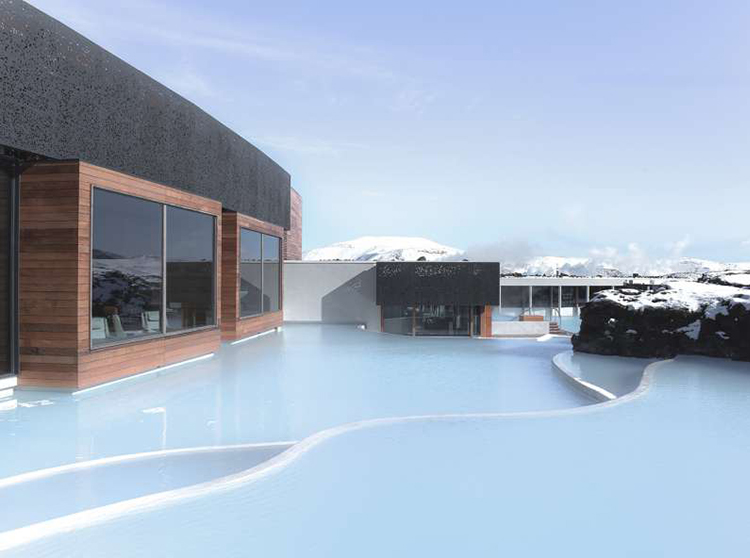In his distinctive "Superflat" style, which employs highly refined, traditional Japanese painting techniques and formats to depict a charged mix of historical subject matter, Pop, animé and otaku content within a flattened representational picture-plane, Murakami moves freely within an ever-expanding field of aesthetic issues and cultural inspirations. Parallel to his distinctive toonish formulations of utopian and dystopian themes, he has recollected and revitalized religious and secular narratives of transcendence and enlightenment favoured by non-conformist Japanese artists from the Early Modern era, commonly considered to be counterpart to the Western Romantic tradition. By situating himself within their legacy of bold and lively individualism in a manner that is entirely his own, he revealed himself to be an artist in dialogue with history and very much of his time.
Murakami’s latest group of paintings explores his complex ambivalence to the legacy of cosmopolitan painter Kuroda Seiki, who brought yōga or Western-style painting to Meiji- period Japan. Kuroda broadly promoted the genre of history painting, as well as the validity of the nude figure as a subject for art. Taking Kuroda’s famous triptych, Wisdom, Impression, Sentiment (c.1900), Murakami consciously reclaims it in a new iteration by applying traditional nihonga techniques like gold- and silver-leafing, as well as recasting the realistically rendered nude figures in contemporary manga style. When it was first shown, Kuroda’s work caused great controversy because of its content, however, as Murakami reminds in paintings such as Shunga: Gibbons (2010) and Shunga: Bow Wow (2010), Japan had embraced explicit erotic content in art as early as the twelfth century. By the Edo period, the long-established genre of shunga sought to express a varied world of contemporary sexual possibilities, often referred to as the creation of a “pornotopia,” an idealised, eroticised and fantastical world parallel to contemporary urban life. In Murakami’s contemporary shunga, graphic depictions of exaggerated and engorged male and female genitals are set against delirious backgrounds of image and pattern.
This theme continues into sculptures, which feature collaborations with key artists working in Japan’s popular otaku culture including Seiji Matsuyama -- creator of the controversial manga “My Wife is an Elementary School Student” – and BOME, a figure sculptor who previously collaborated on Murakami’s first life-size sculpture, Miss Ko2 (1997), an ebullient Playboy fantasy translated into manga cuteness and proportions. Whereas Nurse Ko2 (2011) relates closely to the earlier sculpture, with its leggy, busty verticality and sexy uniform (right down to a suggestively loaded syringe), 3-Meter Girl (2011) is an absurdist composition that pushes form and content to new extremes. She stands with feet spread wide, her abundant hair roiling around her like an elaborate rococo frame as if to steady her petite body against the whopping pendular breasts whose size and weight threaten to topple her. A monumental cast and highly polished metal penis of towering proportions, Mr Big Mushroom (2011), is a realist, manmade take on the traditional stone lingam. Together with Miss Clam (2011), an inviting metal vagina, it provides an exclamation mark to the enduring obsession with sexuality in contemporary human society.
Takashi Murakami was born in 1962 in Tokyo, and received his BFA, MFA and PhD from the Tokyo University of the Arts (formerly the Tokyo National University of Fine Arts and Music). He founded the Hiropon factory in Tokyo in 1996, which later evolved into Kaikai Kiki, an art production and art management corporation. In addition to the production and marketing of Murakami's art and related work, Kaikai Kiki functions as a supportive environment for the fostering of emerging artists. Murakami is also a curator, a cultural entrepreneur, and a critical observer of contemporary Japanese society. In 2000, he organized a paradigmatic exhibition of Japanese art titled "Superflat", which traced the origins of contemporary Japanese visual pop culture in historical Japanese art. He has continued this work in subsequent impactful exhibitions such as "Coloriage" (Fondation Cartier pour l'art contemporain, Paris, 2002) and "Little Boy: The Art of Japan's Exploding Subcultures" (Japan Society, New York, 2005).
Murakami's major solo exhibitions include Museum of Contemporary Art, Tokyo (2001); Museum of Fine Arts, Boston (2001); Fondation Cartier pour l'art contemporain, Paris and Serpentine Gallery, London (2002). A comprehensive survey exhibition “© MURAKAMI” opened at Museum of Contemporary Art, Los Angeles in 2007 and traveled to Brooklyn Museum, New York, Museum für Moderne Kunst, Frankfurt, and Guggenheim Museum, Bilbao during 2008-9. His most recent large-scale exhibition was held at the Château de Versailles, France in 2010. Murakami currently lives and works in Tokyo, New York, and Los Angeles.
